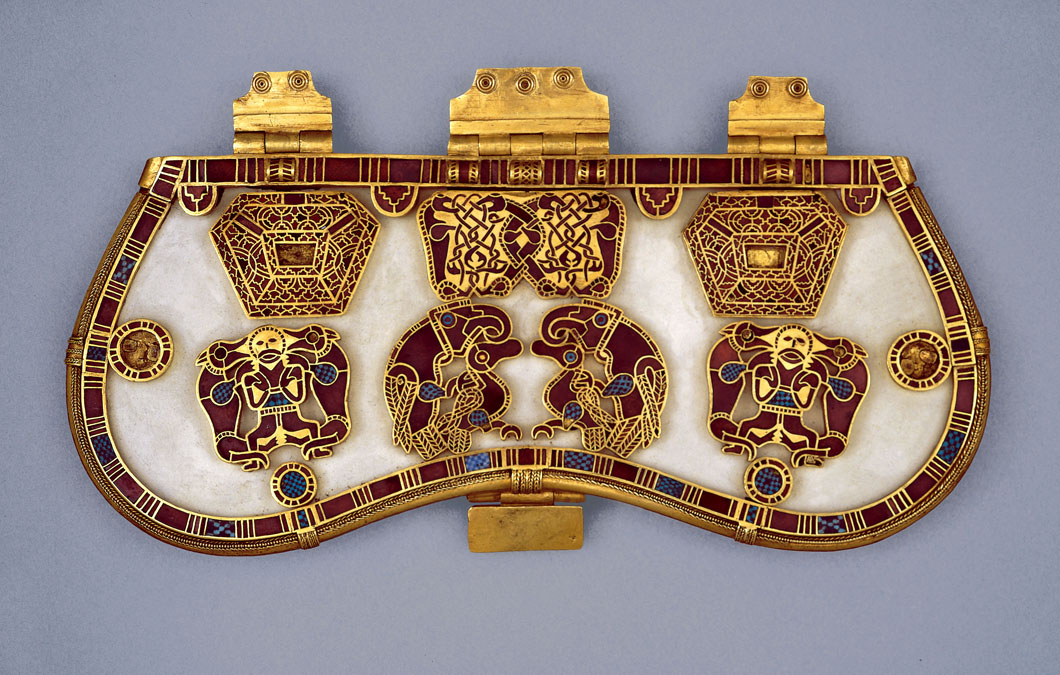
By the end of the 6th century, the Western Roman Empire had been almost entirely replaced with small Germanic kingdoms of people, including the Visigoths, Angles, Saxons and the Huns that had migrated from Scandinavia and other points in Eastern Europe. These Kingdoms shared common traditional features but due to the nomadic nature of these people historically, they encountered many different cultures and ideas which presented itself in their artworks. An example of this is the purse cover found at Sutton Hoo. Constructed in gold and enamel using the animal style, the purse cover features a standing man between two facing animals. This figure first shows up in Mesopotamian art about 3,200 years earlier. Other facets of the ornamentation include interwoven patterns containing parts of fighting animals and interlacing bands of decoration. Migration Period art was mobile art with a utilitarian function, such as weapons, tools and jewelry to fit in with a nomadic existence. The art of the Germanic peoples is almost entirely personal adornment, portable, and taken to the grave where it would act as an offering to dead spirits for protection of the living as exemplified by archeological finds such as the ship burial at Sutton Hoo. No monumental architecture or sculpture of permanence has been found to contradict this finding. Furthermore, the objects found at Sutton Hoo are important because they demonstrate the exchange of designs and techniques through contact with different cultures encountered. These objects have relation to the art of the Germanic people, Scandinavian roots and make reference to Christianity. Some scholars have speculated about the crosses on the Sutton Hoo Clasps and silver bowls with crosses on them also indicate an awareness of the new religion. The portability, assimilated styles and durability of materials used in the art of the migration period clearly indicate its creators were migratory people.



No comments:
Post a Comment